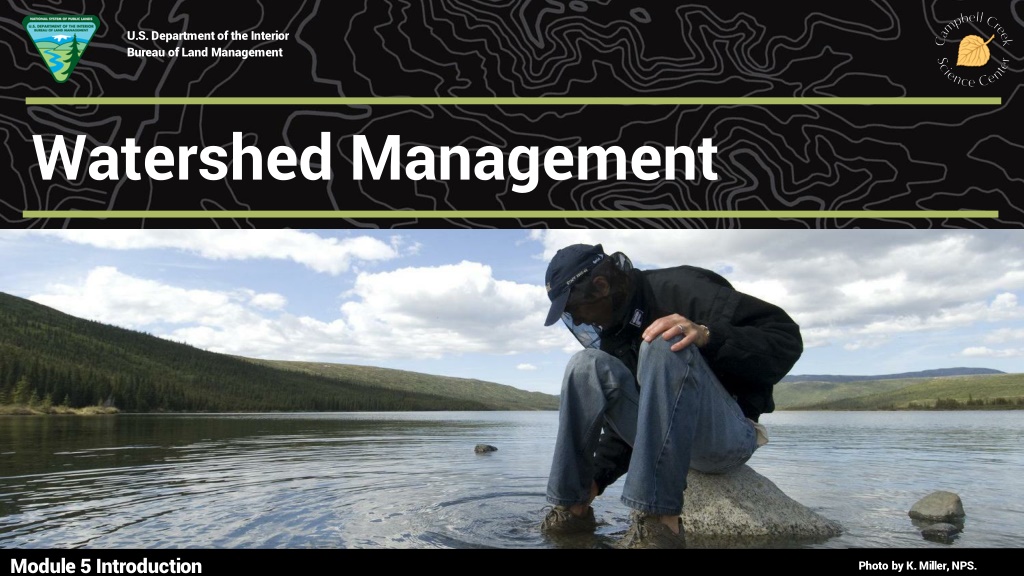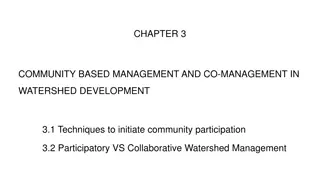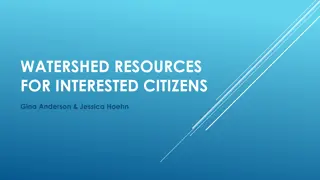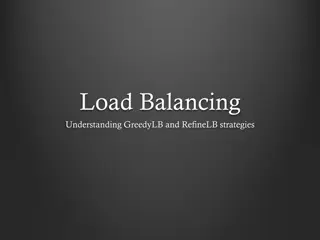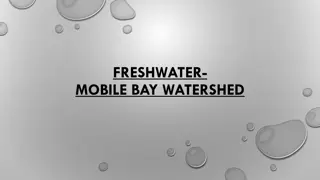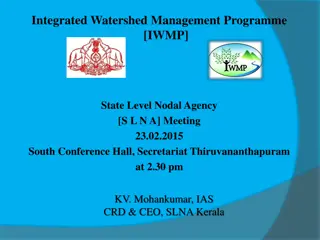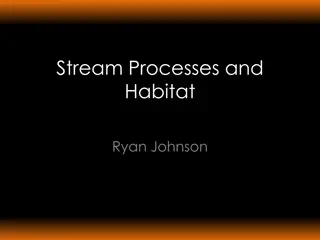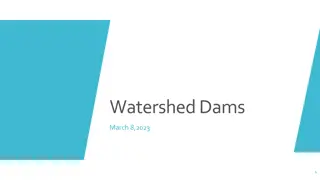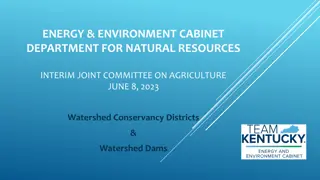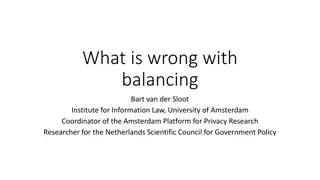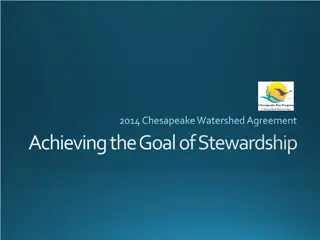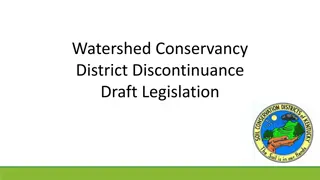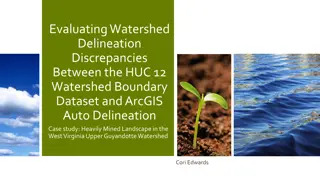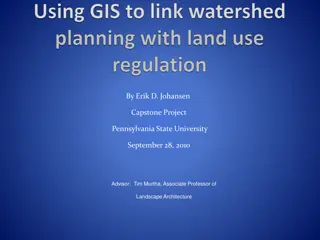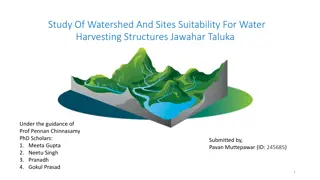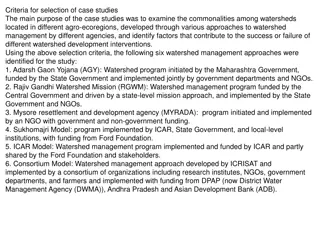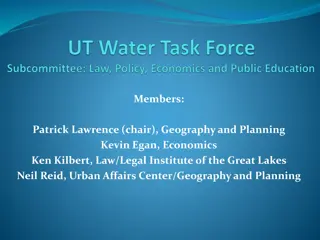Understanding Watershed Management: Balancing Needs and Resources
Exploring the importance of watersheds in providing natural resources, the consequences of human modifications, and how communities strive to balance human needs with protecting watershed health. This module delves into the sources of community essentials like water, electricity, and heat, emphasizing the interconnectedness between human activities and watershed sustainability.
Download Presentation

Please find below an Image/Link to download the presentation.
The content on the website is provided AS IS for your information and personal use only. It may not be sold, licensed, or shared on other websites without obtaining consent from the author. Download presentation by click this link. If you encounter any issues during the download, it is possible that the publisher has removed the file from their server.
E N D
Presentation Transcript
U.S. Department of the Interior Bureau of Land Management Watershed Management Module 5 Introduction Photo by K. Miller, NPS.
U.S. Department of the Interior Bureau of Land Management Module 5: Watershed Management This module was developed in partnership with Alaska Pacific University and its Water Resources Management course. Special thanks to Dr. Erin Larson, assistant professor of environmental science, and Kaitlan McLallen, undergraduate student in marine and environmental science. This work was supported by a NASA Alaska Space Grant award to Dr. Larson.
U.S. Department of the Interior Bureau of Land Management Module 5: Watershed Management Module Questions: What natural resources do you get from your local watershed? What are the consequences of human modifications to watersheds? How do communities balance the needs of people and the health of watersheds?
U.S. Department of the Interior Bureau of Land Management Materials: science journal or a piece of paper something to write with
U.S. Department of the Interior Bureau of Land Management Write down answers to the following questions in your science journal or on a piece of paper. If you don t know the answers, ask a teacher, parent, or elder in your community. What is the source of your community s drinking water? What is the source of your community s electricity? What is the source of your community s heat?
U.S. Department of the Interior Bureau of Land Management People get many things they need, such as water, food, materials, electricity, and fuel, from their watersheds. We call these things natural resources. Craig McCaa, BLM USFWS
U.S. Department of the Interior Bureau of Land Management Humans often modify, or change, watersheds to get natural resources. The McNarry Dam in the state of Washington uses moving water to make electricity. Army Corps of Engineers
U.S. Department of the Interior Bureau of Land Management The changes that humans make to watersheds can affect the animals and plants that live in those watersheds. Bob Wick, BLM
U.S. Department of the Interior Bureau of Land Management Land managers oversee natural resources. They balance the wants and needs of human communities and the health of watersheds. Chris Noyles, BLM
U.S. Department of the Interior Bureau of Land Management Everyone has a role in land management. The choices you make at home, in school, and in your community affect the watershed you live in. BLM
U.S. Department of the Interior Bureau of Land Management It is important to keep watersheds healthy. Healthy watersheds provide natural resources for all living things, including people. Robben Taylor, BLM
U.S. Department of the Interior Bureau of Land Management In this module, you will assume the role of a land manager. You will practice making decisions that balance the needs of communities and the health of watersheds. Chris Noyles, BLM
